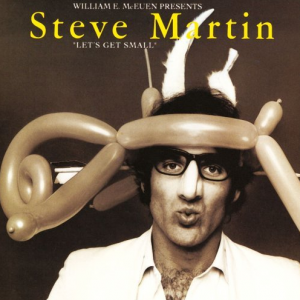Correction: An article yesterday about a tiny force in quantum mechanics that could be used in future microscopic devices referred incorrectly in some copies to the size of the force measured when two metal plates were placed within one 40-thousandth of an inch of each other. It was one 300-millionth of an ounce, not one 300-thousandth. —New York Times, February 10, 2001
 I clipped this correction the day it appeared in the Times and pinned it to my cork bulletin board. This was a long time ago, so I can’t be sure what I was thinking. Most likely I found this assemblage of absurdly small numbers to be comical: the fastidious precision of science meeting its match in the finicky precision of the Paper of Record. What I do know for sure is that at the time I didn’t fully appreciate just how fastidious quantum mechanics is.
I clipped this correction the day it appeared in the Times and pinned it to my cork bulletin board. This was a long time ago, so I can’t be sure what I was thinking. Most likely I found this assemblage of absurdly small numbers to be comical: the fastidious precision of science meeting its match in the finicky precision of the Paper of Record. What I do know for sure is that at the time I didn’t fully appreciate just how fastidious quantum mechanics is.
The “tiny force” in question was the Casimir effect. In 1948, the Dutch physicist Hendrik B. G. Casimir published a paper predicting that if you placed two uncharged metal plates parallel to each other at a sufficiently small distance, quantum effects would finish the job and push the plates together. According to quantum theory, virtual particles are popping into and out of existence all the time. Between the two plates, however, the only particles that could pop into existence would be those with a wavelength shorter than the distance between the two surfaces. As the Times article explained, “The greater density of virtual photons outside the plates would then push the plates together”—assuming that virtual photons really exist.
When I read the correction, I already knew the importance of stretching science to farther and farther decimal places. And I knew that one generation’s unthinkable is the next generation’s norm—or, as the nineteenth century physicist Albert A. Michelson said, “Our future discoveries must be looked for in the sixth place of decimals.” What I hadn’t yet learned was that the Planck length—named after the father of quantum physics, Max Planck, and according to uncertainty theory the smallest length we can hypothetically measure—must be looked for in the thirty-fifth places of decimals, or 1.61619926 × 10-35 meters, to be precise.
Which you’d better be. Hence the need to distinguish between one 300-thousandth of an ounce and one 300-millionth of an ounce (a leap from the fifth decimal place to the eighth). If you don’t know the basics of quantum mechanics, as I did not at that point, getting the numbers wrong and needing to issue a correction were comical. If you do know the basics of quantum mechanics, getting the numbers wrong is still comical, but for other reasons (such as rendering the sentence senseless). Getting the numbers right, however, is serious business.
Like the Times, I stand corrected.
Where I don’t stand corrected, however, is the other part of my original assessment: These numbers are absurdly small. And I stand by that assessment because in my experience scientists share it. We can’t think that small, yet that’s where the universe works its greatest mysteries. As the mathematician Stephen A. Fulling wrote in 1989, regarding the experiments that over the decades have demonstrated that the Casimir effect and therefore virtual particles are real, “No worker in the field of overlap of quantum theory and general relativity can fail to point this fact out in tones of awe and reverence.” Or as the Berkeley Lab physicist Saul Perlmutter once said to me, “It’s like there’s a beautiful carnival going on, and we’re sitting here, reading a newspaper.”
With luck, it’s a newspaper that got the numbers right.
One thought on “Correction”
Comments are closed.